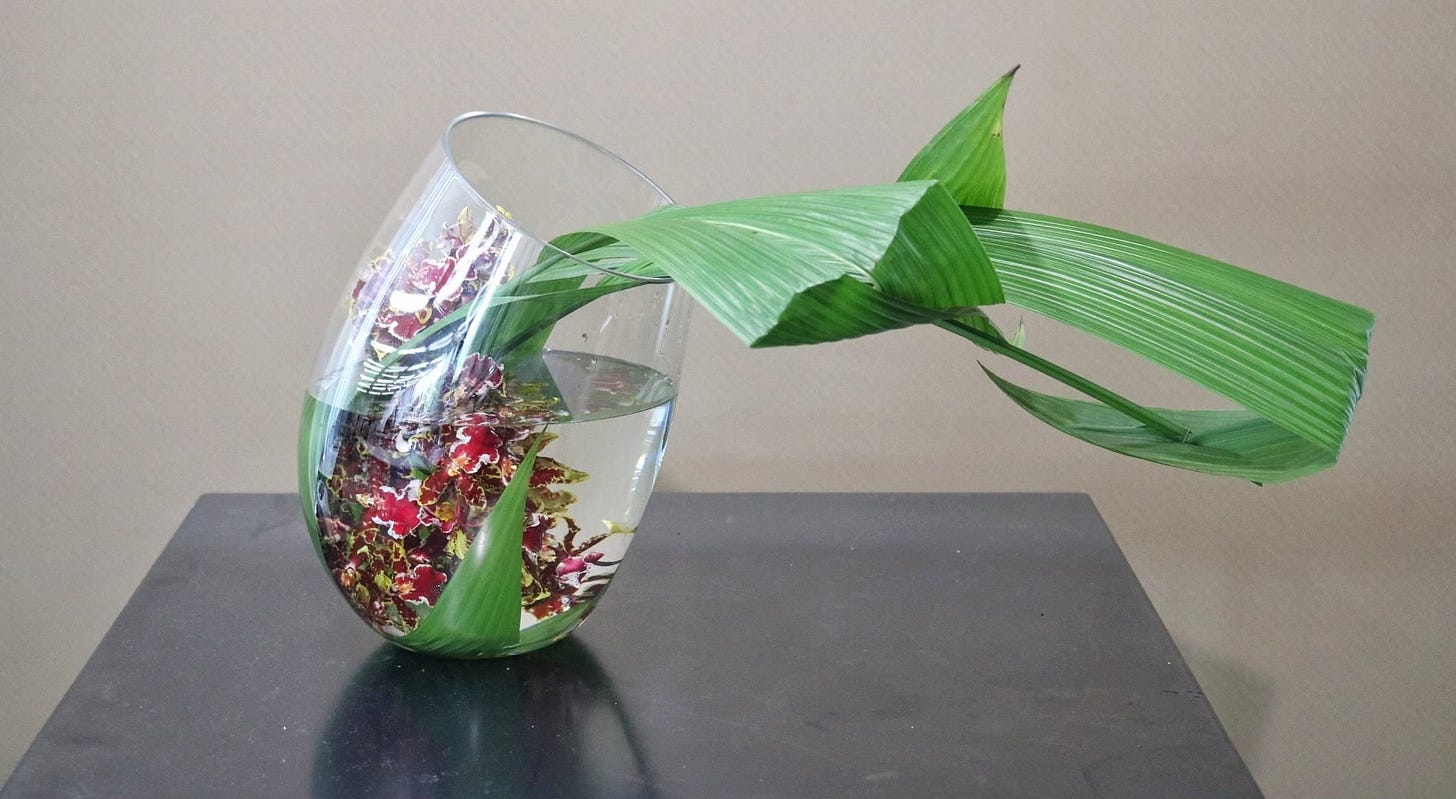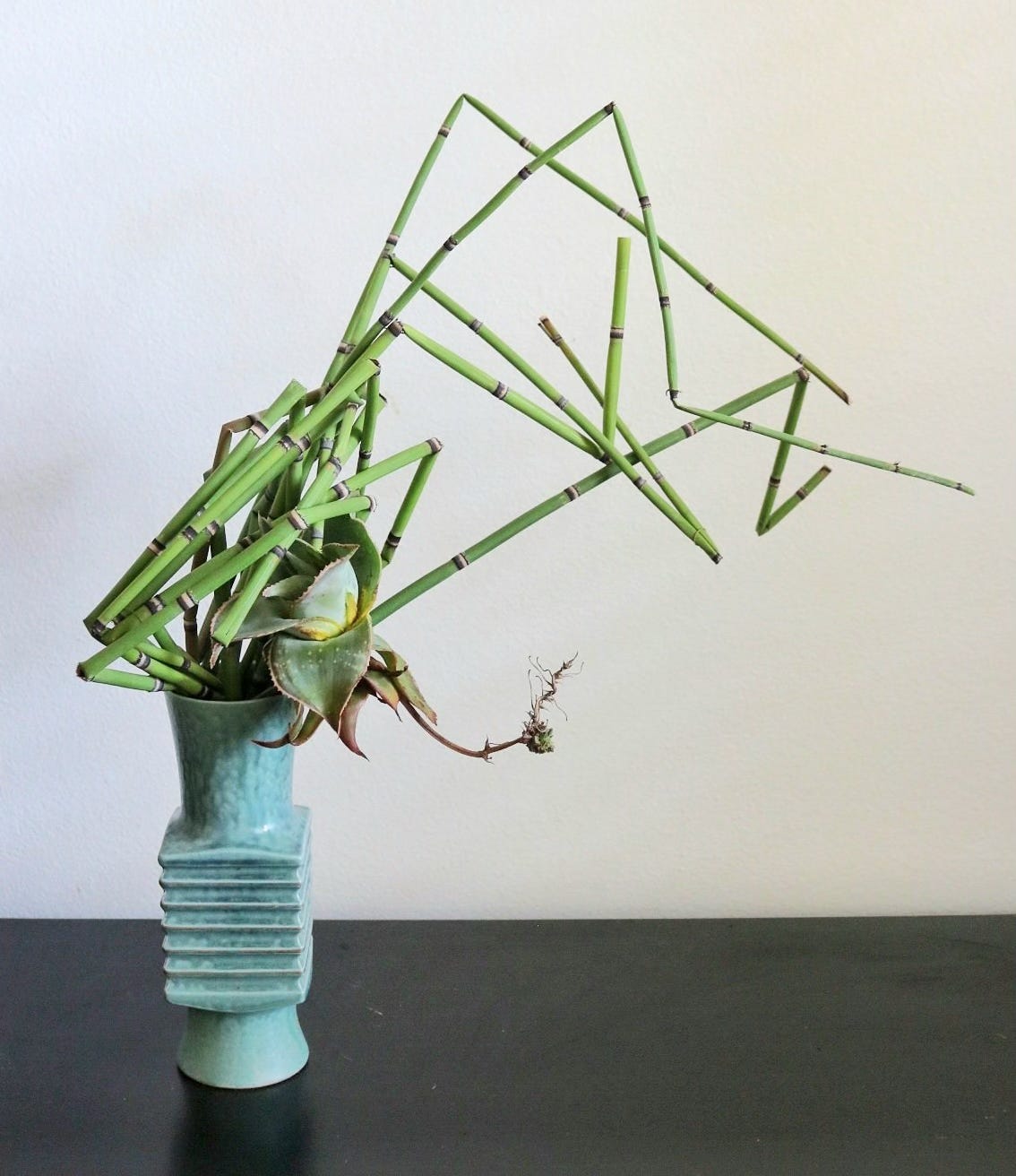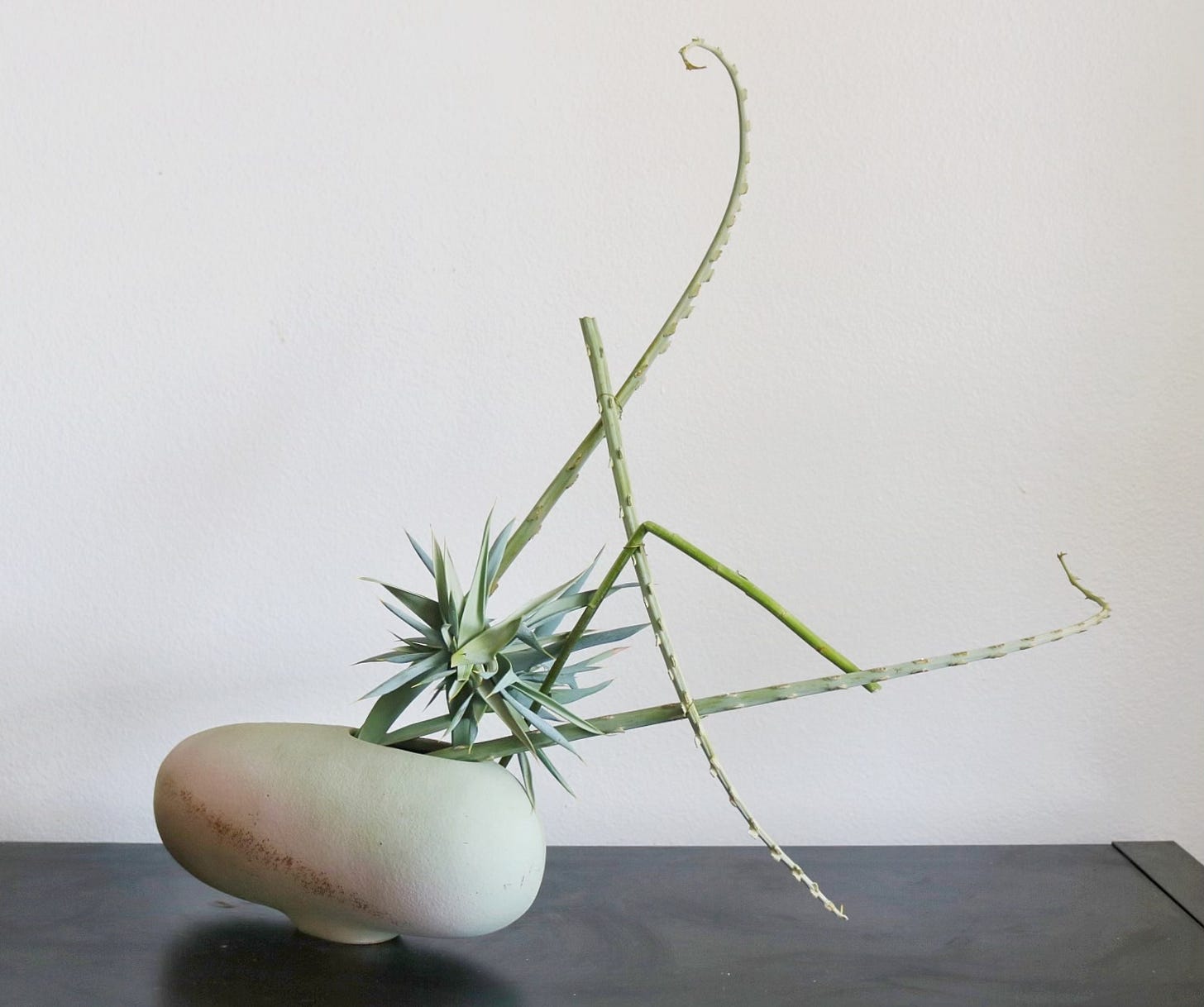🎶 Artists in the Wild (1): Meet Auralynn Nguyễn, Ikebanist
On art as a lifelong path and flowers as living beings—Japan
Meeting people from diverse backgrounds is one of the most rewarding aspects of traveling to me. I love talking to whoever I encounter, not just hosts, guides, and fellow tourists, but random locals and expats who’ve lived in the area for a while.
I discussed food insecurity with Sri Lankan chefs, language barriers with Korean authors, and Bali’s two-sidedness with taxi-drivers. Although I’m rather shy, I find it surprisingly easy to approach strangers abroad. We’re more open-minded, I think, when we’re away from home, more inclined to make connections.
Starting today, I’d like to introduce you to some of the most interesting people I’ve met on my journeys. They’re often artistic individuals, changing the world with their hands and minds.
🎶 Artists in the Wild is an interview series with the creative people I run into on my journeys. This is episode #1.
Meet Auralynn Nguyễn, Ikebanist
Introduction
I first met Auralynn Nguyễn in June 2020 in Đà Lạt, a mountain resort in the South of Vietnam. We were in the basement of the 100 Roofs Bar designed by the expressionist Vietnamese architect Đặng Việt Nga (who’s also responsible for the Crazy House.)
We were the only visitors in this creepy maze-like building and talked for so long that Auralynn invited me to drink rice wine with her later that evening. We did and had a great time. So much so that Auralynn missed her bus back to HCMC and stayed a bit longer than planned in her favorite bar/greenhouse Cù Rú.
We met again in Joshua Tree National Park and twice more in Vietnam. As our friendship deepened, I learned more about her practice as an ikebanist. I’m deeply impressed by her arrangements and the philosophy behind her work.
“My mind has been shaped by ikebana.”
—Auralynn Nguyễn
Seven Questions
What is your art and what drew you to it?
Ikebana is a three-dimensional art form using natural materials—primarily plants—as its medium. Simply said: Ikebana is the art of arranging flowers.
My first encounter with ikebana was from a library book. Despite reading the introduction and captions that explained each composition, I felt stunted. I had an instant curiosity to try an ikebana lesson and by chance there was an opportunity. But the lesson created more questions than answers, so my hunger grew.
This was more than ten years ago. Since then, my mind has been shaped by ikebana. I enjoy traveling overseas from time to time to participate in exhibitions and workshops, but I also teach locally in Southern California.Who or what inspires you and how?
Ikebana in Japan has murky origins that go back hundreds of years. Ikebana is related to Buddhist practices and chanoyu (the Japanese tea ceremony).
There are three large schools of ikebana still in practice today. Each showcases a period of Japanese aesthetic values.
- Ikenobo, the oldest ikebana school, is over 550 years old and entirely run by a familial lineage. The arrangements are conceived primarily for traditional usage, such as their placement inside the tokonoma (an alcove in a tatami room). The compositions are very sparse, linear, and comply with a strict set of materials suited for each season.
- Ohara, another established school, is known for creating the moribana style of arranging in the late nineteenth century. It is very naturalistic, with goals of emulating one’s surroundings on a smaller scale.
- I felt inspired by the Sogetsu school established in 1927. The Sogetsu school promotes ikebana as an art that can be made "anywhere, anytime, and by anyone". By following this philosophy, we remove all boundaries to ikebana. The Sogetsu style embraces that we live in a world that’s continually expanding its diversity in flora, environment, culture, and aesthetic beauty.What makes ikebana so special to you?
The tactile experience of touching plants, its temporal nature, and a plant's given visual qualities are what make this art form unique. We assemble materials within our immediate surroundings and use them for the sake of immediate expression.
Ikebana is extremely personal, sharing with the world our emotions, awareness and observation. The more we continue to create, the more we may feel a connection to the earth, as it is the earth that gives us our art materials.
Since flowers are living beings, they have a voice. We need to understand the life cycle and characteristics of each plant if we are to arrange ikebana. Every stem, even if it’s the same genus, is unique.
Flowers will continue to bloom, and even when they are not available, we have the earth to arrange. With that in mind, an ikebanist will always be a student. It is a path that continues with life.What makes ikebana different from other arts?
Due to the short-lived nature of ikebana compositions it is disconnected from a driving force in other visual mediums: the art market.
We can create ikebana as a service for events and businesses, which follows the Japanese sensibility of hospitality, omotenashi. In that case, ikebana will enhance the space, showcasing the season and environment in which it is placed. When we do this, ikebana is no longer only about a vase and plants, but it becomes part of the architecture or interior design. Being able to integrate ikebana into so many facets of creativity and daily life is what makes it exciting and contemporary.Where are you now and why?
Currently I am in Tokyo for ikebana lessons and exhibitions, as I always find new things to discover when I meet with my instructors. An issue we face often in creative forms is a pre-fixed notion of what something ought to be, which ikebana is a victim of. Integrating within the community is important, otherwise the ideas can become repetitious.Where are you headed and what do you hope to find there?
With the centennial of the Sogetsu school approaching in 2027, I hope that we can find new ways to promote ikebana to the general audience that isn't so formal like it has been in the past.
Then again, using fashionable terms such as "wabi sabi" or "avant garde" to describe ikebana can also limit our understanding of the art. Some people believe Sogetsu ikebana encourages insincerity and flamboyance, which is far from the truth. It’s more important to showcase your skill, technique, and intuition in your creative work than your ego.What’s one piece of advice you have for people who are starting in your art form?
Try to find liberating joy by creating art for art’s sake. You don’t need to like every composition you create; no one is perfect, and not every day is an easy one. There is always tomorrow to try again.
More About Auralynn Nguyễn
Auralynn Nguyễn teaches ikebana workshops in Claremont (Southern California) and in Vietnam. You can hire her for private lessons and personal flower arrangements for occasions such as birthdays and anniversaries.
Recently, she started her own business importing the most delicious cashew nuts from Vietnam into California: Superior Nut Product. Shipping across the US is available! And trust me: if you’ve never bought cashews with skin before, you have never truly tasted a cashew. The flavor is so rich and layered that it’s addictive.
Follow Auralynn on Instagram or use her website to get in touch.
Desk Journey aka Reading Recommendation
Since we just traveled back to Japan with Auralynn, I think this is the right moment to share a book I read and loved in July: Water, Wood, and Wild Things: Learning Craft and Cultivation in a Japanese Mountain Town by Hannah Kirshner.
Hannah Kirshner, an artist from Brooklyn, falls in love with the mountain town Yamanaka and stays there long enough to learn all about the ins and outs of the Japanese tea ceremony, lacquerware, onsen bathing, rice production, wood carving, saké serving, and more. She comments on cultural differences and her being a woman in a men’s world, and I learned so much.
“The spirit of saké is female. Her name is Matsuo. Some people say the reason for the old prohibition against women entering a sakagura, the building where saké is brewed, is that Matsuo Sama could get jealous.”
Water, Wood, and Wild Things: Learning Craft and Cultivation in a Japanese Mountain Town by Hannah Kirshner (Penguin Books, 2022).
Time to Say Goodbye
I’m still in Amsterdam, living on my brother’s sail boat for a month. What’s that like? you may wonder. Well, I’m working on a piece to let you know. But for next week, I have something totally different prepared for you, a short essay that involves Vincent van Gogh, protestant spinsters, WWII, a Florida governor, and generous glasses of Chardonnay.
All my best,
Claire
P.S. I’m toying with the idea to organize a writers’ get-together in Amsterdam soon. If you’d like to attend and we haven’t been in touch recently, please reach out, so I can invite you.











Such exceptional pieces of art. I'd never heard of this. Thank you for posting.
Wild Ikebana! I was more used to the standard. Our neighbor on Maui went to Ikebana classes and would regularly bring over centerpieces that were pretty but quite tame. I think even she was a bit bored w/ what she was producing, thus, our oft received gifts. Love this post and I look forward to your artists in the wild series. Great idea Claire!